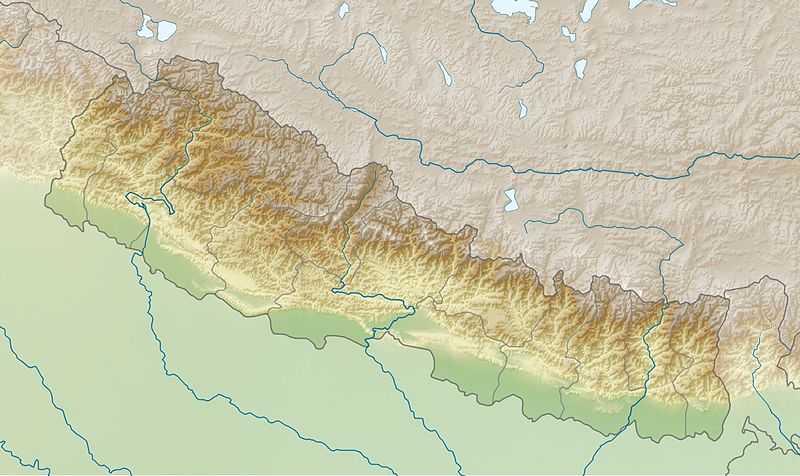Api (mountain)
| Api | |
|---|---|
 Api Location in Nepal | |
| Elevation | 7,132 m (23,399 ft)[1][2] |
| Prominence | 2,040 m (6,690 ft)[1] |
| Listing | Ultras |
| Location | |
| Location | Darchula district, Northwestern Nepal |
| Range | Yoka Pahar Subsection, Gurans Himal, Himalayas |
| Coordinates | 30°00′15″N 80°56′00″E / 30.00417°N 80.93333°ECoordinates: 30°00′15″N 80°56′00″E / 30.00417°N 80.93333°E |
| Climbing | |
| First ascent | May 10, 1960 by K. Hirabayashi, Gyaltsen Norbu |
| Easiest route | rock/snow/ice climb |
Api is the highest peak in the Yoka Pahar Section of Gurans Himal, part of the Himalayas in the extreme northwest corner of Nepal, near the borders of India and Tibet.[3] It is a little-known peak in a rarely visited part of the Himalayas, but it rises dramatically over the low surrounding terrain.
Notable features
Although low in elevation among the major mountains of Nepal, Api is exceptional in its rise above local terrain; the surrounding valleys are significantly lower than those surrounding most higher Himalayan peaks.[4]
Api Himal Expedition
Api Himal Expedition starts after you trek up to the Api Himal Base Camp at an altitude of (4,000m.). It takes about 20 days for you to attempt the summit during which you take days rest and construct different camps at different height for acclimatizing you. You also explore the Holy lake of Kali Dhunga which is at 2 hours walking distance from the Api Hiimal Base camp. Api Himal Expedition is gaining popularity day by day with increasing number of tourist each year.
Climbing history
The Api region was visited by Westerners in 1899, 1905, and 1936, but the peak was not attempted until 1953. This attempt was unsuccessful, as was another, by Italians, in 1954 which resulted in the death of two expedition members.[5]
The first ascent of Api occurred in 1960. The Doshisha Alpine Society of Japan successfully completed the Northwest Face route attempted by the 1954 party.[5]
In 1980 a British Army Mountaineering Association expedition made an attempt to climb the peak by the south face reaching within a few hundred meters of the summit.[6]
December 24, 1983 Polish climbers Tadeusz Piotrowski and Andrzej Bieluń made the first winter ascent.
The Himalayan Index lists three more ascents of the peak, in 1978, 1996 and 2001.[2]
References
- ↑ 1.0 1.1 "Ultra-prominent peaks of Nepal". peaklist.org. Archived from the original on 25 December 2008. Retrieved 2009-01-06.
- ↑ 2.0 2.1 "Himalayan Index". Alpine Club. Retrieved 2009-12-24.
- ↑ H. Adams Carter, "Classification of the Himalaya," American Alpine Journal 1985.
- ↑ "DEM files for the Himalaya (Corrected versions of SRTM data)". viewfinderpanoramas.org. Archived from the original on 10 December 2009. Retrieved 2009-12-24.
- ↑ 5.0 5.1 Jill Neate (January 1990). High Asia: An Illustrated History of the 7000 Metre Peaks. Mountaineers Books. ISBN 0-89886-238-8.
- ↑ Alpine Journal 1981 http://www.alpinejournal.org.uk/Contents/Contents_1981_files/AJ%201981%20167-171%20Agnew%20Api.pdf